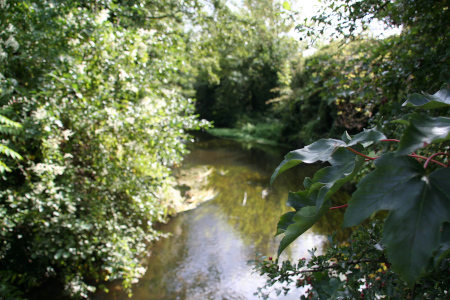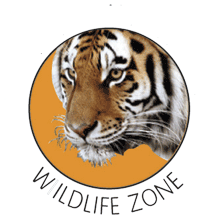Tales of the Riverbank
When I first saw Roderick the Rat scurry across my riverside garden, scared of being discovered, I knew that this was a wild animal exactly where he ought to be. The incident reminded me of Tales of the Riverbank.
As a child, I loved Johnny Morris narrating the tales of Roddy Rat, Hammy Hamster and his friends, but I never dreamt that one day I would own a house that would have a stream or river in which I would share my life with some of these animals.
 |
| Near Millstream Fork |
When I first moved here I was extremely happy to be living in an area that was the natural home of riparian animals (animals that live in water). Seen from this perspective, humans can often be the pests, rather than vice-versa. But because of my love of wild animals I decided to change my small patch of land into an effective wildlife garden.
This is why I left my own Roddy Rat in peace, although one day without warning, he vanished. Perhaps he was deliberately killed, because all rodents are still thought of as vermin by some people living on riverbanks.
A few months later I saw another rodent of the same size. On this occasion I could grab a precious few more seconds to look closely at this new Roddy Rat. He seemed a little smaller than the 8 or 9 inches of a brown rat, was more reddish brown than greyish brown and had smaller eyes and ears, which all pointed him being a vole. I remembered that in the original Tales of the Riverbank, Roderick the Rat was in fact a water vole.*
Another way of telling the difference between a water vole and a brown rat is when you hear the sound of a loud plop, it is often followed by a cloud of brown sediment from the riverbed. Only voles do this, and fortunately I have witnessed this quite a few times at Millstream Fork.
Another unusual thing which I have noticed is that Roddy regularly shimmies up the thin pole to use the bird feeders. Whilst this food is set out primarily for birds, I make sure that all animals are most welcome guests, including Roddy and his pals.
The brown rat is put into the same category as the much rarer black rat by many people. This is incorrect as the brown rat was a recent introduction to our shores in the 1700s, coming from Norway. They came over at the time when the House of Hanover ascended the throne, and began the Georgian line. This was why the brown rat was also named the Norway rat and the Hanoverian rat.
But it was the indigenous black rat that carried the bubonic plague across Europe and to Great Britain in the 1340s, causing the Black Death. There is probably a formidable continuity of this mediaeval consciousness that we still cannot throw away nearly 700 years later. Therefore all animals that look similar to the black rat are associated and are seen as being unhealthy and vermin that ought to be exterminated.
However, these negative attitudes towards rodents are now being opposed by some people. When my garden river wall was being rebuilt I chose to have ‘rest places’ for these mammals included in the construction. This is easily done by creating indentations in a flush wall, just by the water line. I knew that this feature would help Millstream Fork bear many secrets over the next few decades. Now, I just wonder how many generations descended from my first Roderick have been here, unnoticed. . ..
* water voles are often referred to as water rats
The second set of writings is The Chronicles of a Conservationist which reveals many autobiographical tales of what a conservationist can experience throughout the world. Many but not all are pleasant experiences that may well be published in a second anthology.
One example of these tales is an expedition to
Liechtenstein- the European Jewel
Like many people, I’ve just got back from my annual holiday and am still full of it all. I visited the Alpine principality of Liechtenstein, and asked the questions, was there any interesting wildlife in such a small and heavily populated country? If so, could I see them?
After a few days of rain the clouds lifted, the sun shone and the blue sky became an exalting dome. So we took immediate advantage of this and organised walks in the high mountain peaks, forests and lakes, away from people and the picturesque villages.

